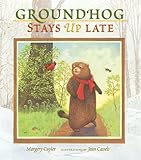Lesson 1: Identifying Problems and Solutions in the Story
Lesson Plan
Groundhog Stays Up Late | 570L

- Learning Goal
- Identify and describe the problems and solutions throughout a story.
- Duration
- Approximately 50 minutes
- Necessary Materials
- Provided: Example Chart for Direct Teaching, Guided Practice Worksheet, Independent Practice Worksheet
Not Provided: Groundhog Stays Up Late by Margery Cuyler, chart paper, markers
-
Teacher Modeling

will identify the meaning of plot as the problem and solution in a story. I will explain that many stories have more than one problem and solution. I will chart the problems and solutions in a book previously read in class. (Example chart is provided.)
-
Think Check
Ask: "How did I identify the problems and solutions in the story?" Students should respond that as you read you thought about all the things that were going wrong in the story and how each one was being fixed or solved.
-
Guided Practice

will listen to the first half of Groundhog Stays Up Late by Margery Cuyler and identify and draw a picture of one problem and solution in the text as a class. (Example chart is provided.)
-
Independent Practice

will listen as I finish reading Groundhog Stays Up Late. You will draw a picture and/or write two more problems and solutions in the story. (Independent Practice Worksheet is provided.)
Texts & Materials
Standards Alignment
(To see all of the ReadWorks lessons aligned to your standards, click here.)




These have been great for my first grade class. I am so happy to see good activities online to help out in the classroom.
I have had a difficult time finding material finding material for 1st grade on this topic. I am looking forward to using the lesson with my first graders.